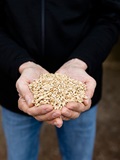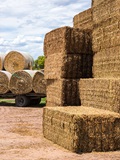North Coast NSW
20 May 2020
| Date | N NSW 23 | N NSW 22 | N NSW 5YA |
|---|---|---|---|
| 06-Jan-23 | 369 | 230 | 327 |
| 13-Jan-23 | 383 | 230 | 327 |
| 20-Jan-23 | 400 | 230 | 340 |
| 27-Jan-23 | 415 | 230 | 340 |
| 03-Feb-23 | 415 | 230 | 340 |
| 10-Feb-23 | 415 | 230 | 354 |
| 17-Feb-23 | 415 | 230 | 344 |
| 24-Feb-23 | 415 | 230 | 334 |
| 03-Mar-23 | 415 | 230 | 334 |
| 10-Mar-23 | 418 | 230 | 342 |
| 17-Mar-23 | 418 | 230 | 349 |
| 24-Mar-23 | 418 | 230 | 349 |
| 31-Mar-23 | 420 | 230 | 349 |
| 07-Apr-23 | 420 | 230 | 349 |
| 14-Apr-23 | 420 | 230 | 349 |
| 21-Apr-23 | 420 | 230 | 344 |
| 28-Apr-23 | 420 | 230 | 344 |
| 05-May-23 | 420 | 230 | 344 |
| 12-May-23 | 420 | 230 | 344 |
| 19-May-23 | 420 | 230 | 344 |
| 26-May-23 | 420 | 230 | 344 |
| 02-Jun-23 | 420 | 230 | 344 |
| 09-Jun-23 | 415 | 230 | 344 |
| 16-Jun-23 | 413 | 230 | 334 |
| 23-Jun-23 | 410 | 230 | 324 |
| 30-Jun-23 | 390 | 230 | 324 |
| 07-Jul-23 | 380 | 230 | 329 |
| 14-Jul-23 | 363 | 230 | 331 |
| 21-Jul-23 | 345 | 230 | 351 |
| 28-Jul-23 | 340 | 230 | 351 |
| 04-Aug-23 | 330 | 305 | 366 |
| 11-Aug-23 | 330 | 305 | 376 |
| 18-Aug-23 | 330 | 305 | 376 |
| 25-Aug-23 | 330 | 305 | 406 |
| 01-Sep-23 | 330 | 305 | 406 |
| 08-Sep-23 | 305 | 396 | |
| 15-Sep-23 | 300 | 390 | |
| 22-Sep-23 | 300 | 383 | |
| 29-Sep-23 | 300 | 375 | |
| 06-Oct-23 | 300 | 366 | |
| 13-Oct-23 | 300 | 361 | |
| 20-Oct-23 | 305 | 361 | |
| 27-Oct-23 | 305 | 359 | |
| 03-Nov-23 | 307 | 359 | |
| 10-Nov-23 | 308 | 351 | |
| 17-Nov-23 | 313 | 336 | |
| 24-Nov-23 | 315 | 334 | |
| 01-Dec-23 | 315 | 331 | |
| 08-Dec-23 | 315 | 330 | |
| 15-Dec-23 | 320 | 331 | |
| 22-Dec-23 | 330 | 333 | |
| 29-Dec-23 | 356 | 339 |
Notes:
Change in price is the change since the last report. Hay quoted is sourced and delivered locally, GST exclusive unless stated otherwise. It should be noted that local prices quoted may not be the cheapest available, sourcing it from another region may be more affordable, and buyers are encouraged to evaluate all options. Prices are indicative to a mid-range shedded product, and based on the best indication of market value at the time of reporting. It should be noted there is a wide variation in quality of hay, prices for a mid-range product will not reflect the weighted average of trade. Prices will naturally vary based on the product quantity and quality, buyer/seller relationship and the size of the trade.The hay report has been commissioned by Dairy Australia to provide an independent and timely assessment of hay markets in each dairy region. This report is created using data provided by the Australian Fodder Industry Association (AFIA). It should be remembered that actual prices may vary for quality or other reasons. Whilst all reasonable steps have been taken to ensure the accuracy of the information contained in this report, Dairy Australia disclaims all liability to the fullest extent permitted by Australian law for any inadvertent errors and for any losses or damages stemming from reliance upon its content. Dairy Australia recommends all persons seek independent advice and, where appropriate, advice from a qualified advisor before making any decisions about changes to business strategy.
Commentary
- Low rainfall totals across most of the region again this week, with most falls being less than 5mm of rain, though the northern inland parts had higher totals of up to 10mm of rain.
- Pastures close to the coast continue to have some green feed availability, though most green feed seen in the region are on irrigated pastures. Further inland, pastures are looking in much worse condition with little green availability.
- Some supplementary feeding is taking place throughout most of the region, especially in those areas with low rainfall totals and limited pasture options.
- Crops in the region are still showing some good green growth, with comments suggesting that both grain and forage crops continue to be on track for an average year. However, this optimism is being tempered by the lack of follow up rain and all are indicating that additional rainfall is needed to see the crops through to harvest.
- Enquiries continue to come in, especially for any new season hay that is being cut, though this is fairly rare. Hay sheds are looking emptier each week, though this is a mix of feeding out to herds and clearing out older supplies. Good quality hay continues to come in from outside of the region.
- No change to prices this week.
- Cereal hay: +/-0 ($315 to $345/t). Prices remain steady this week.
- Lucerne hay: +/-0 ($420 to $475/t). Prices remain steady this week.
- Straw: +/-0 ($90 to $150/t). Prices remain steady this week.
- Pasture hay: +/-0 ($300 to $350/t). Prices remain steady this week.
- Please note: Unless stated otherwise, prices are per tonne, sourced and delivered locally. The price range indicated is for feeds of varying quality with the price range generally indicative of quality of feed. We recommend feed testing and viewing of fodder before purchase to be sure of the quality of feed.

